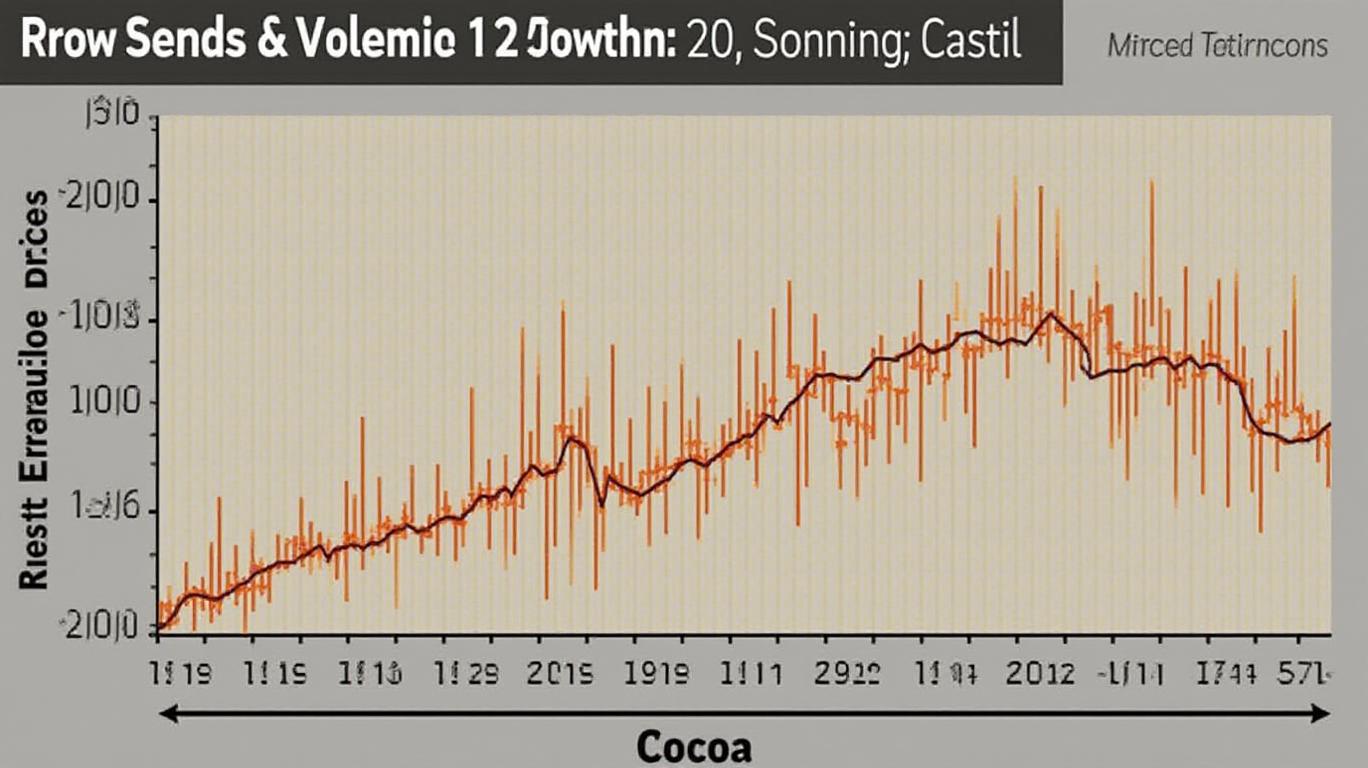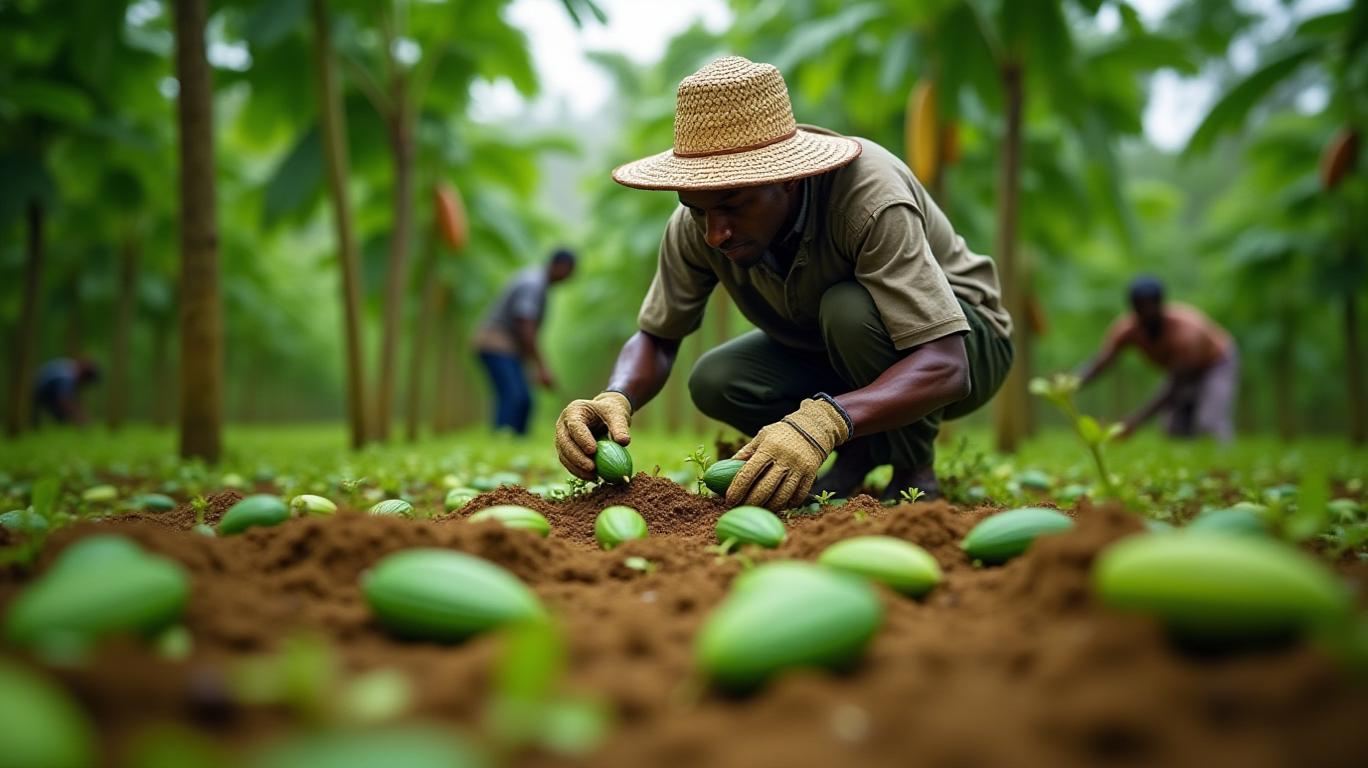Soft Commodities: Raw Sugar Rebounds, Cocoa Clings to Gains Amid Supply Risks
The soft commodities market has seen a dramatic shift in recent weeks, with raw sugar futures rebounding from multi-year lows while NY cocoa recouped losses driven by a mix of supply optimism and demand headwinds. Yet beneath the surface, both markets remain fraught with risks tied to weather, policy, and speculative shifts.

Raw Sugar: Rebounding on Supply Optimism, But Risks Loom
Raw sugar futures (ICE Sugar No. 11) have climbed to 17.44 cents/lb in early May 2025, marking a partial recovery from a February low of 16.97 cents. The rebound reflects optimism over Brazil’s record sugarcane crop and India’s historic harvest, which traders project could deliver 1.48 million metric tons for May 2025 deliveries—a fourfold increase from 2020 levels.
But the rally is fragile. Brazil’s production faces two critical risks:
1. Weather: Prolonged El Niño rains could halt milling by December, limiting output to 27.2 million tons, far below initial expectations.
2. Policy: India’s post-election government might restrict exports to stabilize domestic prices, as seen in a 700,000-ton cut in late 2024 that briefly spiked prices to 20.89 cents.
Cocoa: Mid-Crop Woes Offset by Global Surplus
NY cocoa prices have clawed back losses to $2,350/ton (as of early May), recovering from a February low of $2,200/ton. The bounce-back is driven by Ivory Coast’s mid-crop quality issues (5-6% of beans rejected due to poor quality) and Ghana’s reduced harvest (down 5% to 617,500 tons). However, these factors are overshadowed by a looming global surplus of 142,000 tons—the first in four years—as Nigerian exports surge and West African weather improves.
Demand remains the wildcard. Weak sales from major chocolate makers like Hershey (down 14% in Q1 2025) and tariff-driven cost increases have dampened consumer appetite.
Key Risks and Investment Outlook
For Raw Sugar:
- Bullish Case: A December sugar harvest extension in Brazil could add 300,000–500,000 tons to supplies, pushing prices above 19.31 cents.
- Bearish Case: Weak Chinese imports and dominant speculative shorts (75,593 contracts as of late 2024) could drag prices toward 16.44 cents—the 2025 forecast low.
For Cocoa:
- Bullish Catalysts: Further mid-crop quality rejections in Ivory Coast or Ghana’s export restrictions could tighten supply.
- Bearish Pressures: Rising U.S. inventories (up to 2.08 million bags in May) and a $15–20 million tariff cost burden on chocolate makers like Hershey could cap gains.
Conclusion: Volatility Will Reign—Investors Need Flexibility
Both raw sugar and cocoa markets are caught in a tug-of-war between supply optimism and demand skepticism. For sugar, Brazil’s milling progress and India’s export policies will be decisive. Cocoa’s fate hinges on whether West African supply can absorb the surplus without triggering a price collapse.
Investors should:
1. Monitor Brazil’s weather forecasts closely—El Niño rains could disrupt sugar output.
2. Watch Ghana’s Cocobod policies for signs of tighter export controls.
3. Consider short-term trades with stop-losses, given the technical support/resistance levels:
- Sugar’s next support is 14.67 cents (March 2021 low).
- Cocoa’s resistance is $2,500/ton (pre-2024 crisis highs).
In this volatile environment, the risk/reward ratio tilts slightly bearish for both commodities. Traders who stay agile—hedging against weather shocks and policy shifts—will best navigate the choppy waters ahead.


_442a2dcc1749832873286.jpeg)
_e68fac6d1749831664430.jpeg)






